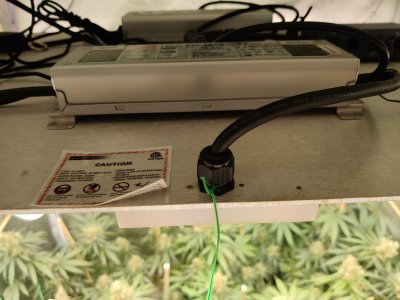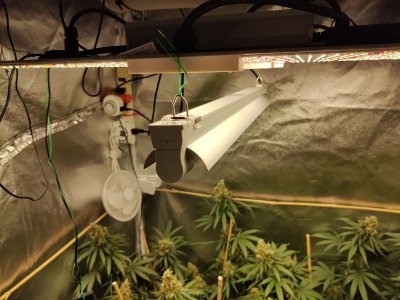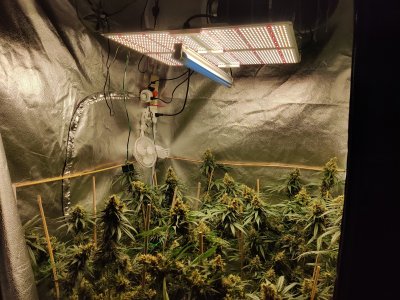- Joined
- Apr 2, 2023
- Messages
- 1,588
- Reaction score
- 8,430
It’s an addiction ! Worse the smoking for sure !I just never have enough lol.
I have all 7 strains i have growing right now lol.
Follow along with the video below to see how to install our site as a web app on your home screen.

Note: This feature currently requires accessing the site using the built-in Safari browser.
It’s an addiction ! Worse the smoking for sure !I just never have enough lol.
I have all 7 strains i have growing right now lol.
@SSHZBut this is not to say that UV doesn't offer some benefits...........first off, as stated, it hardens up plants and makes them tougher, with thicker leaves and the ability to withstand tougher elements. It also can help in controlling insects and some diseases. Add in its ability to increase terpenes, it maybe worth adding to the grow the last couple of weeks.
On the down side, it can damage plants and thus reduce overall yield if over used.
I bought my UV's thinking it would increase THC, as i heard/read that THC builds as a defense mechanism to defend against the UV on bud surfaces, acting as a diffuser when the light hits it. Science has proved otherwise.
That's pretty much what I found out when sampling with UVB and without UVB. I don't have my weed tested at a lab or anything so I don't know if there was any difference between them in THC % etc. If there was, it was not noticeable by smoking it.Grandpa........I don't think total UV power is the issue here. For the record, my fixtures use 24 watt bulbs. Point is, UV either increases resin production or not- that's what is being debated. I don't get my final product tested these days, so it's impossible for me to judge one way or the other. Lastly, its my opinion that if you grow a healthy product, have good genetics and let them finish well- a small increase in THC probably won't be noticeable.
Yes him and migro cover it pretty wellThat's pretty much what I found out when sampling with UVB and without UVB. I don't have my weed tested at a lab or anything so I don't know if there was any difference between them in THC % etc. If there was, it was not noticeable by smoking it.
Does anybody know if Dr Bugbee has done any studies on this? I'd be interested in what he has to say.
So you are saying UVB lamps don't work and don't bother..the light I have is also a T5 UVB.... it is pretty easy to get carried away by vendor hype....which is one of the many good reasons why we're here. Impartial testing in real world conditions is our BB Gold (Acapulco) Standard. Heavy sigh....This is my experience as well.
I have t5 UVB lamps in the giveaway section if that tells you anything.
I couldn't agree moreImpartial testing in real world conditions is our BB Gold (Acapulco) Standard.
Spot on man.that’s how I see it aswell.my main focus is keeping a plant as healthy as I can right to the end .I doubt I will ever run them.don’t need to.I already spend enough lol.I use the Calif. Lightworks Solarcare UV's...........they are specifically built for a 4 X 4 area, which fits my setup perfectly. You don't need a lot of UV to impact the plants, and less on time with the UVB while more on time with the UVA.
Off the California Lightworks website- "Maryland University researchers found that plants exposed to UVB radiation produced almost 28% more THC than plants grown without intentional UVB exposure." This is the same study everyone quotes and what the light manufacturers rely on when mentioning increases in THC. Unfortunately, the results have never been duplicated, per numerous experts in the field.
Grandpa........I don't think total UV power is the issue here. For the record, my fixtures use 24 watt bulbs. Point is, UV either increases resin production or not- that's what is being debated. I don't get my final product tested these days, so it's impossible for me to judge one way or the other. Lastly, its my opinion that if you grow a healthy product, have good genetics and let them finish well- a small increase in THC probably won't be noticeable.









